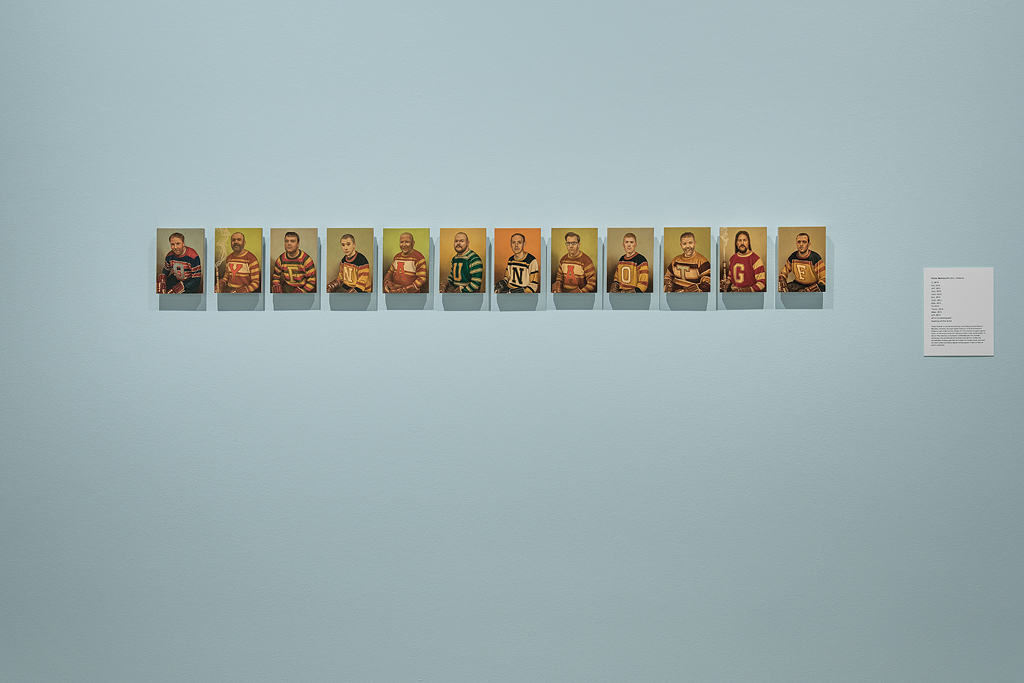Power Play: Hockey In Contemporary Art

Guest Curated by Jaclyn Meloche
Thursday, October 4th to December 31st, 2021
Group exhibition: Judy Anderson, Marc-Antoine K. Phaneuf, Scott Conarroe, Adrienne Crossman, Barrie Jones, Cyndra MacDowall, Hazel Meyer, Laura Millard, Kent Monkman, François Morelli, Didier Morelli, Liz Pead, Liss Platt and Victor Romão.
Zoom Reception:
Date: October 21st, 7 pm to 8 pm
Exhibition Statement
Power Play: Hockey in Contemporary Art provokes a timely inquiry into the histories and politics of exclusivity embedded within hockey. Inspired by the idea that hockey is much more diverse than the popular stereotypes have led contemporary society to believe, the exhibition calls into question the complicated relationships between hockey, gender, and race. Drawing from sociologist Jean Harvey’s argument that hockey is metaphorical, Power Play exemplifies how the material culture of hockey contemplates new narratives for identity politics in popular culture.
In an online space, Power Play presents the works of 14 artists who all explore hockey as a catalyst for instigating conversations surrounding nationalism, gender and racial equity, physical and mental health, and the value of self-esteem. Through four distinct themes–hockey masks, hockey cards, hockey jerseys, and hockey equipment–the metaphorical and mythological connotations that surround the sport become the subjects of critical debate.
At the core of Power Play is a desire to challenge gender and racial intolerance as well as the patterns of omission within professional sports. Through hockey and the themes considered in the exhibition, the underlying goal is, therefore, to question the culture of difference within the game.
Judy Anderson
At the core of Judy Anderson’s work is a desire to hold others in high esteem by demonstrating respect—honour—for the values and teachings that are at the root of Plains Cree intellectualizations of the world. Drawing on Indigenous teachings, knowledge and methodologies, Anderson creates work that honors the people in her life. This one brings me the most pride honors her youngest child, her son Riel who, when he was thirteen years old, believed that hockey was his life. The piece was created to first honor Riel, demonstrate his importance, and make visible the respect he deserved as an Indigenous child who lived, breathed, and ate hockey. No longer a child whose life is dedicated to hockey, Riel has embraced other interests beyond hockey, although he remains a fan of the game–(Go Jets Go).
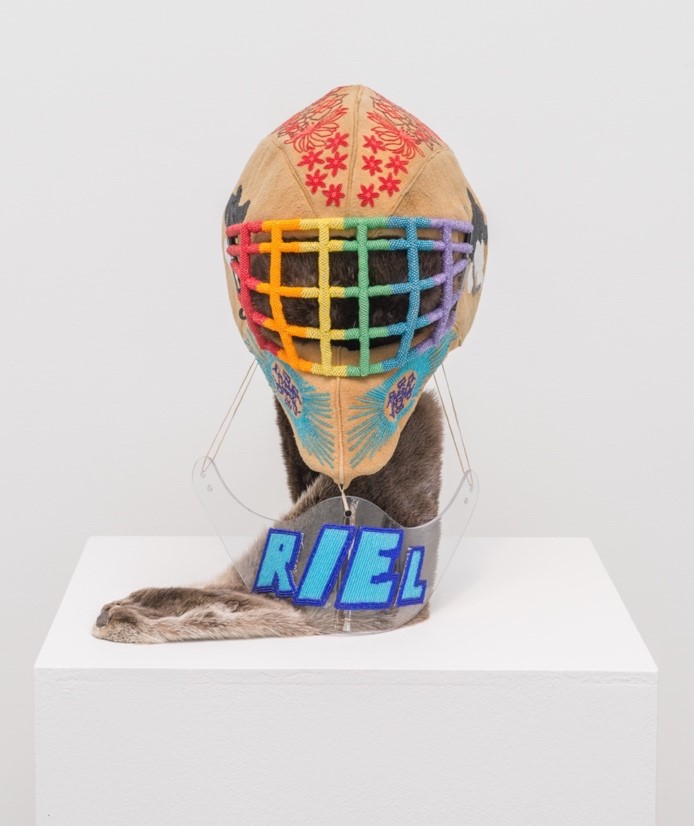
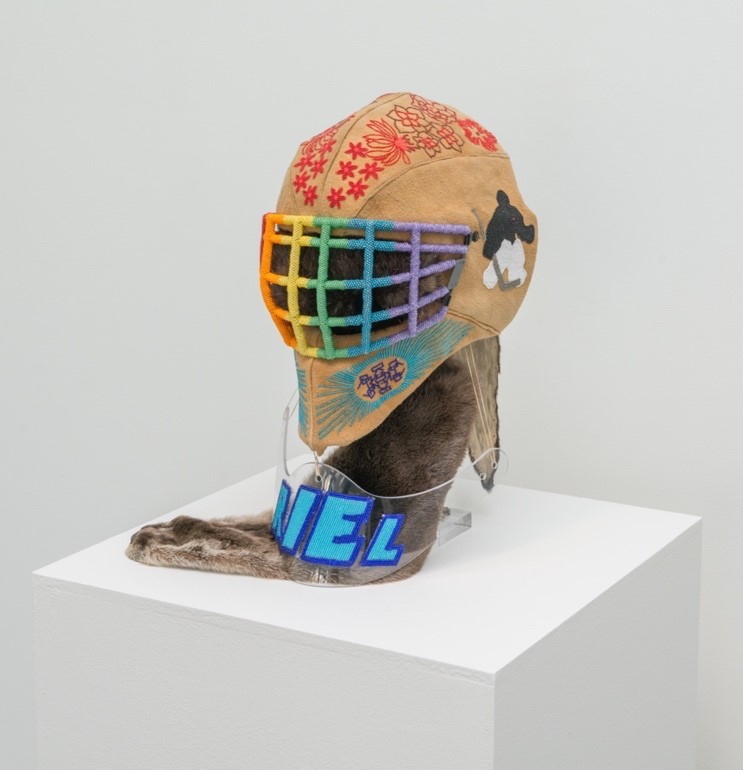
Marc-Antoine K. Phaneuf
Peinture canadianne is an ongoing series of installations that comprise 3000 hockey cards arranged to mimic the patterns and trends of Canadian abstract painting from the 1940s and 1950s. Recalling the aesthetics of canonical works by artists, such as Jean-Paul Riopelle, this monumental fresco made of disposable and collectible everyday objects is a pastiche of brush strokes, colour, and scale. In the context of Power Play: Hockey in Canadian Contemporary Art, Peinture canadianne translates into an extra-large portrait that frames the faces of hockey’s past, moments of hyper-masculinity, elaborate styles of facial hair, stereotypical hockey helmet hairstyles, and action-filled facial expressions. Peppered with humour, the work is both an homage to the history of hockey’s mass production in popular culture as well as a tribute to the speed of the game. Instead of overlapping thick impasto brushstrokes on canvas, Phaneuf layers hockey cards onto a white wall to resemble the speed and ephemerality of gestural painting.
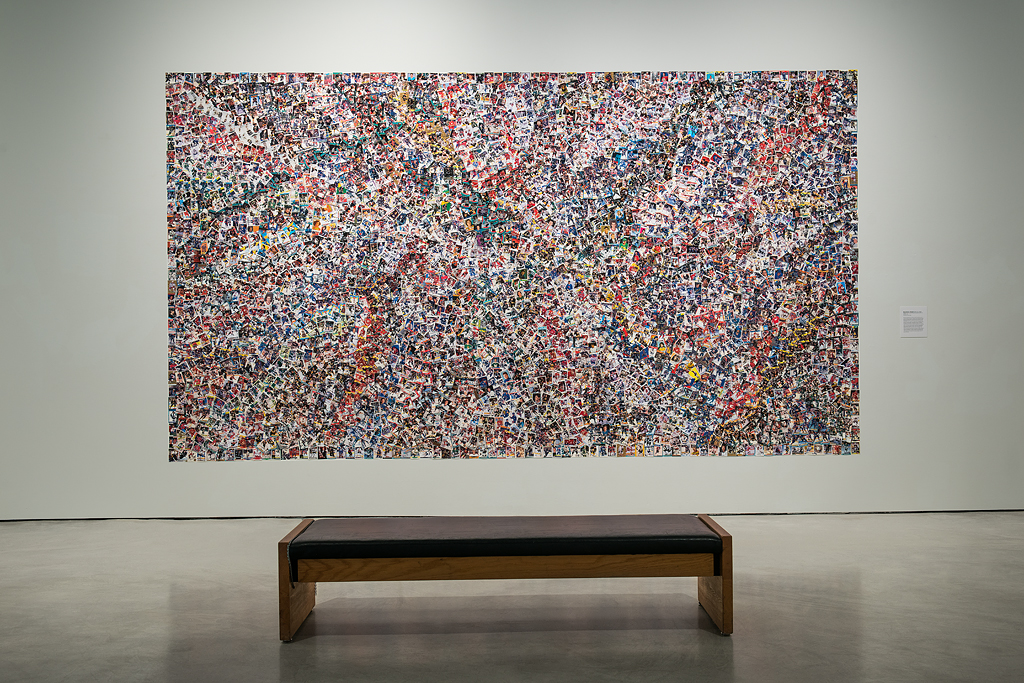

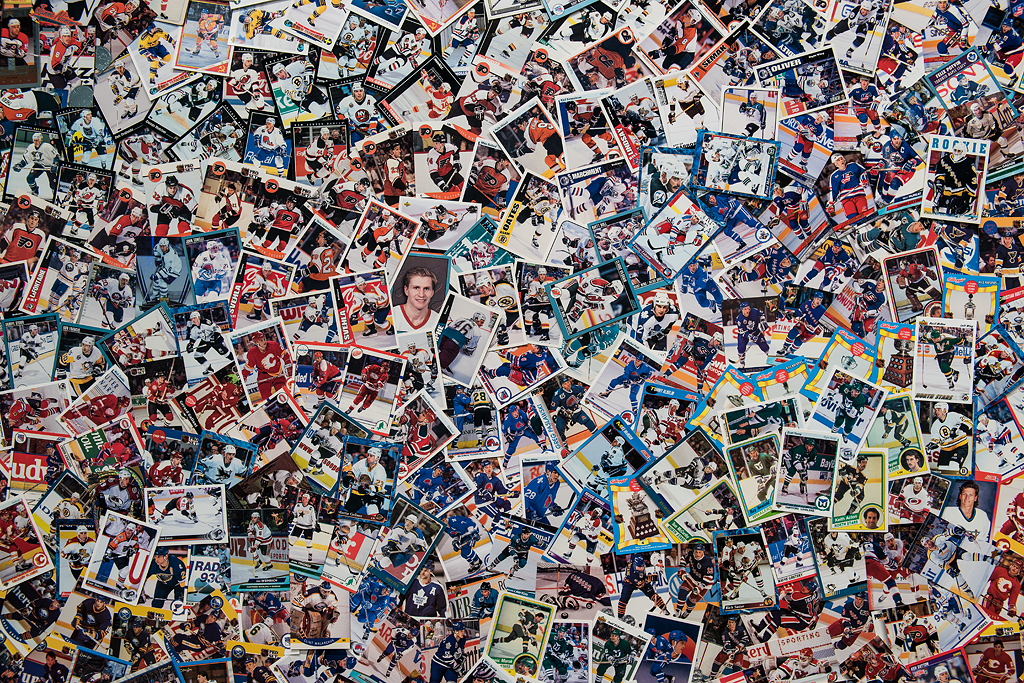
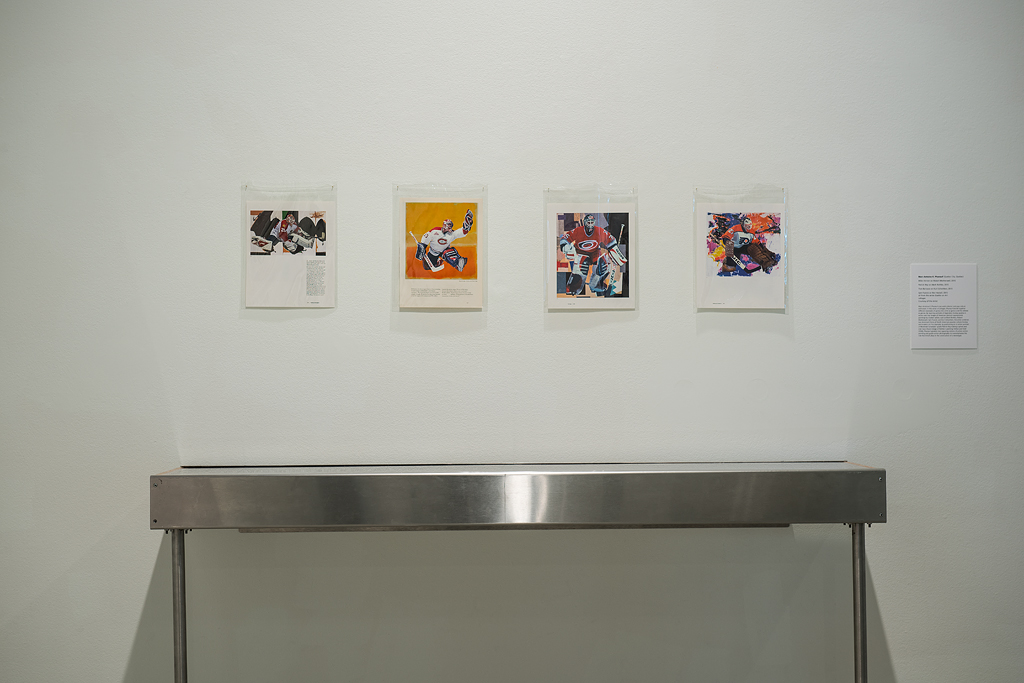
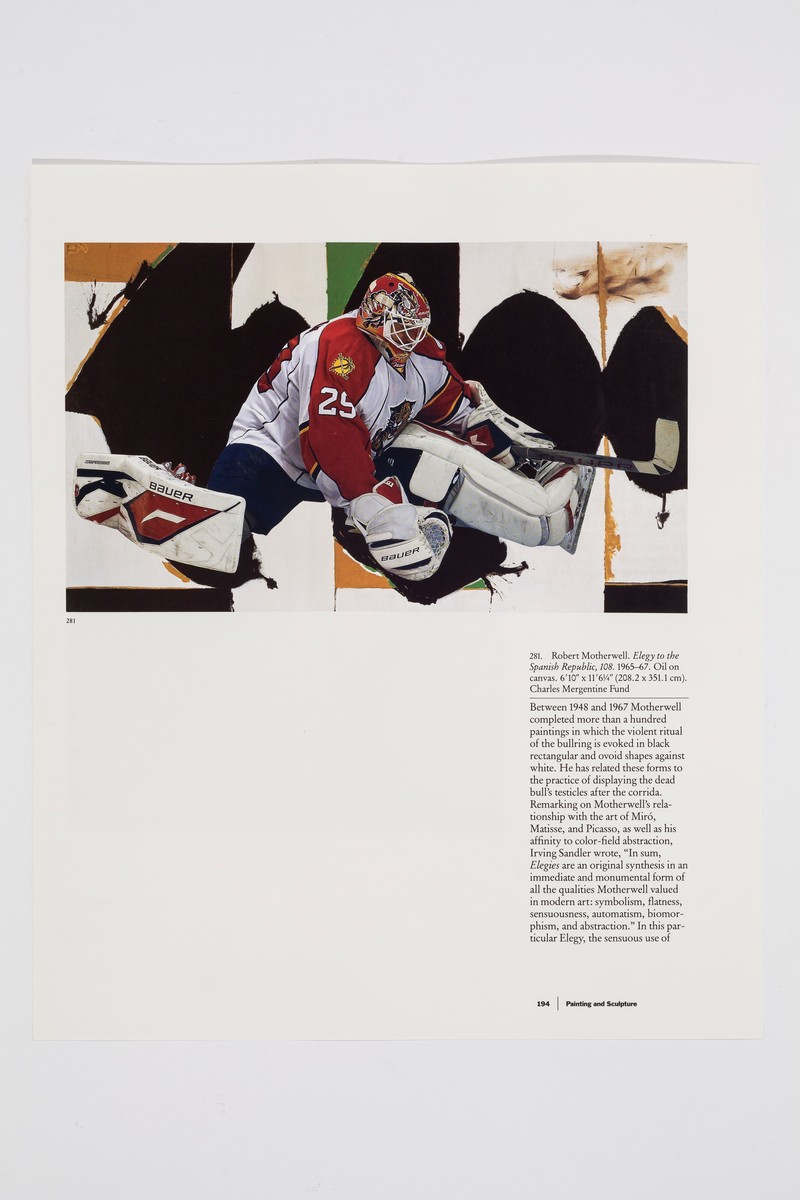
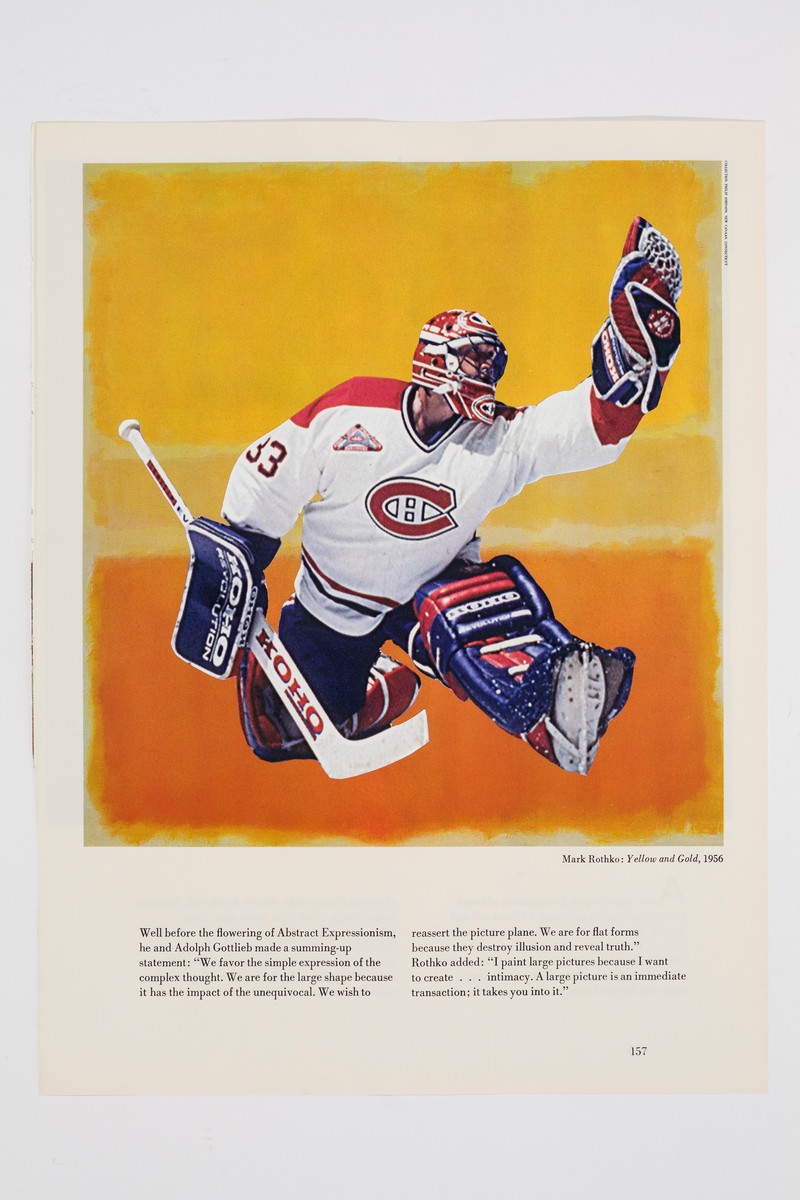
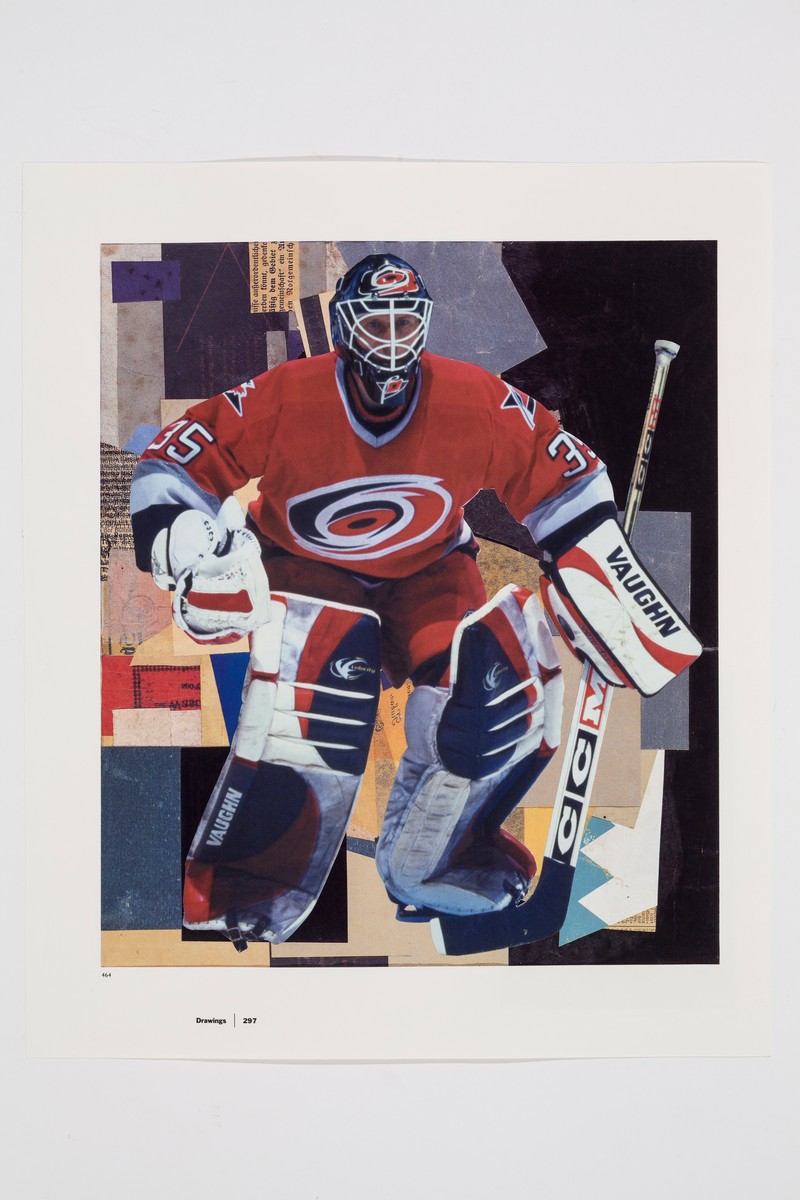
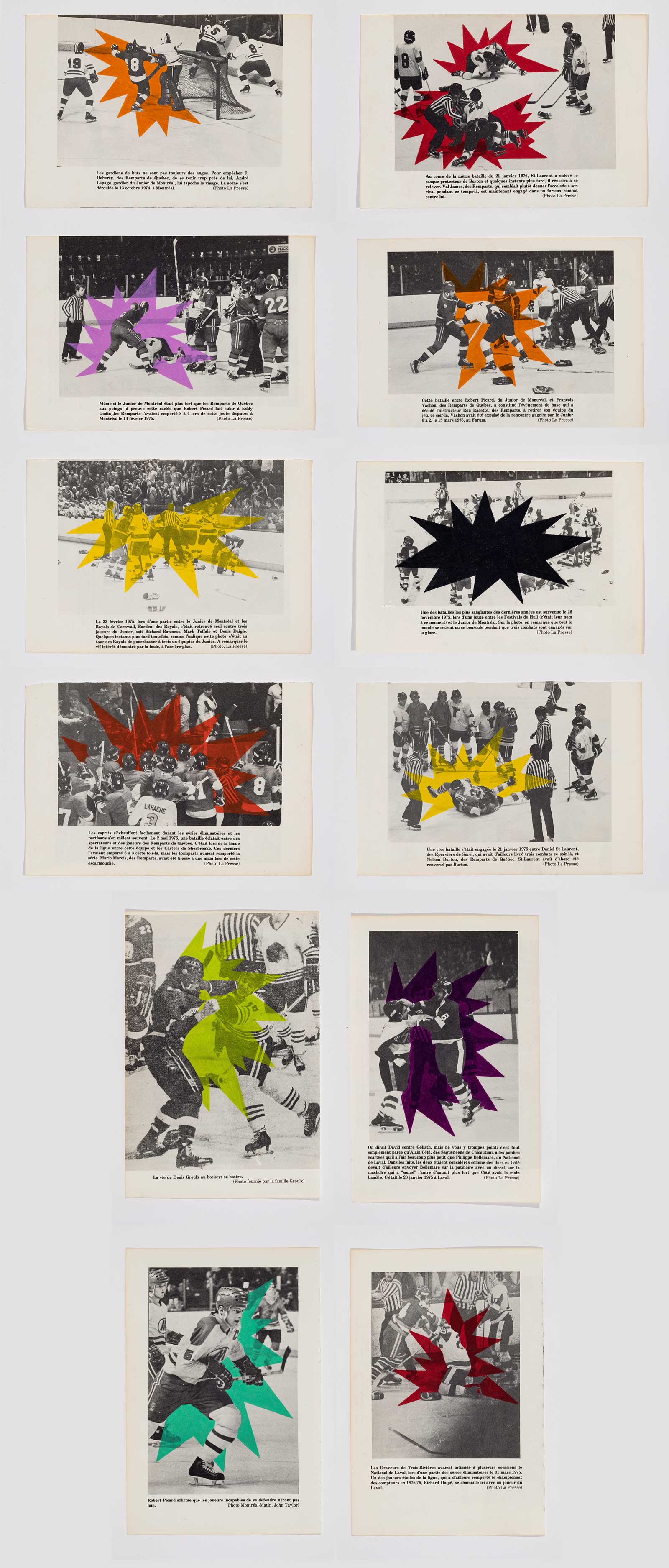
Scott Conarroe
Scott Conarroe’s Shinny Rink, Halifax, Mall Rink, Anchorage, AK, and Skating Pond, Yellow Lake, BC are from a larger series of photographs entitled At Leisure (2003-2012). Reflecting on the concept of free time, and the kinds of activities that people engage with outside of work and domestic chores, photo-based artist Scott Conarroe explores the notion that leisure, also known as “free-time” is never fully free. Through images of skating rinks, tennis courts, and public parks, the artist contemplates the ways in which spaces of leisure also signal spaces in which activities might not be completely free of choice because they are often constrained by social pressures or the influence of others. In these three photographs, Conarroe contemplates the rink as a symbol for the commodification of leisure. A place typically associated with Canada’s famous winter sport–hockey–Conarroe’s three depictions of frozen water dissect the social, economic, and historical relationships between place, leisure, and the ways in which hockey constructs an identity politic–whether through peer pressure, expectation, or the love of the game. For example, Shinny Rink, Halifax NS depicts the seasonal void that exists between foreground shovels and distant smokestacks.Mall Rink, Anchorage AK frames a National Guard recruiting office looming in the background, and Skating Pond, Yellow Lake, BC, 2009 highlights the number of passes it took to clear a “skateable” area of ice on a frozen pond where a subsequent cleaning was deemed “good enough”.
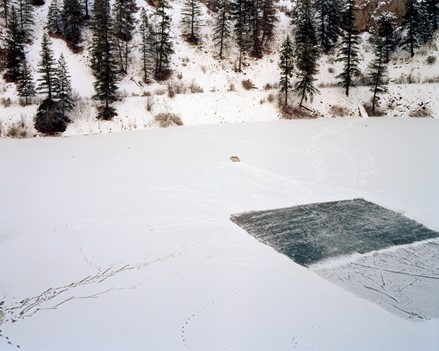

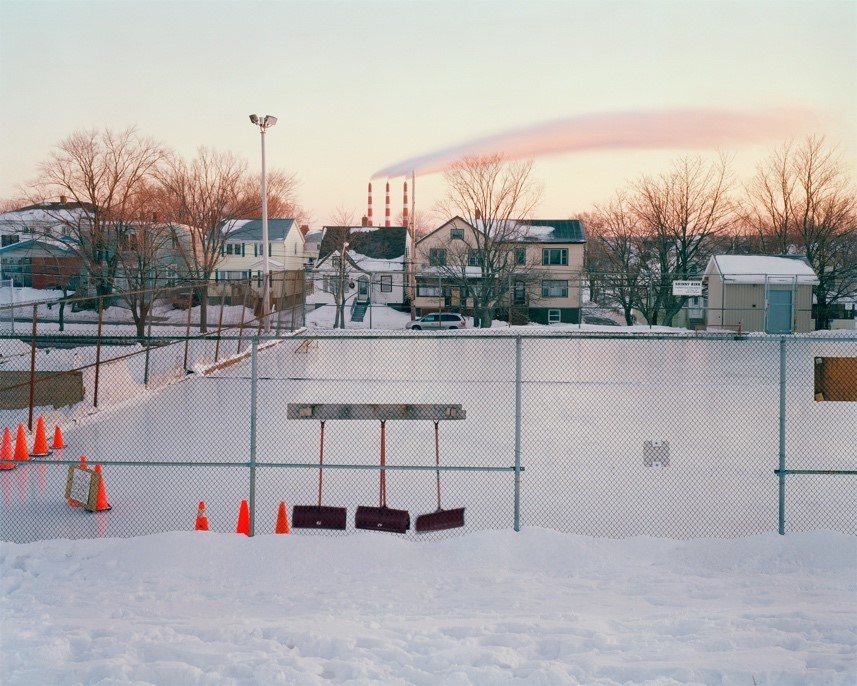
Adrienne Crossman
No Future’s pink and black hockey jersey references queer theorist Lee Edelman’s nihilistic text about queers and the death drive as well as that of the punk mantra (à la Sex Pistols). By questioning the ways in which mainstream cultural memory frames the histories and so-called official narratives that influence the masses, Crossman offers a timely critique of homophobia within professional sports, such as hockey. Sports’ culture, like punk culture, is predominantly authored by European decent heterosexual males, regardless of the impacts made by women, queer people, and people of colour. Building on their desire to challenge the game’s history of exclusivity in the West, Crossman deploys imagery and symbolism to question sexuality in sports.
The floral engraved mirror is a nod to the gay flower language of the Victorian era, a symbolic vernacular through which gay men and lesbians were able to communicate and identify one another while in plain sight of heterosexual society. Subsequently, the pennant serves as a subversion of its historical use in sports and fan culture while calling for a deviation away from dominant and singular historical narratives. In the context of Crossman’s installation, the variety of objects and images work together as queer acts of defiance and conversion. By rendering the familiarity [of the hockey player] unfamiliar, the assemblage-turned-installation destabilizes the narratives of exclusivity that sports culture continues to perpetuate through a symbolic shift.
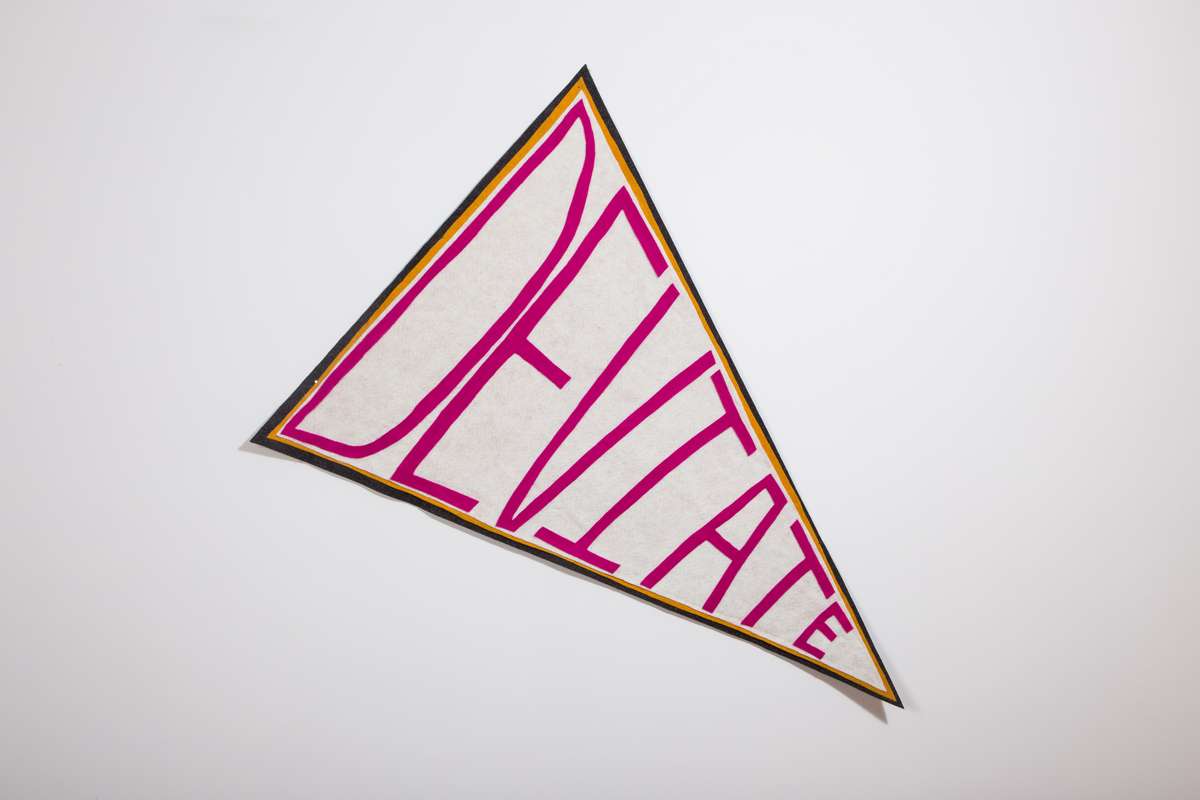
Barrie Jones
Hockey Shots is a series of ten photographs by photo-based artist Barrie Jones (Vancouver) in which he questions the relationships between hockey, masking, and Canadian identity. Between 1973-1979, Jones photographed himself wearing a 1960’s inspired white goalie mask and a red and blue hockey sweater in front of incomparable landmarks around the world. In Power Play 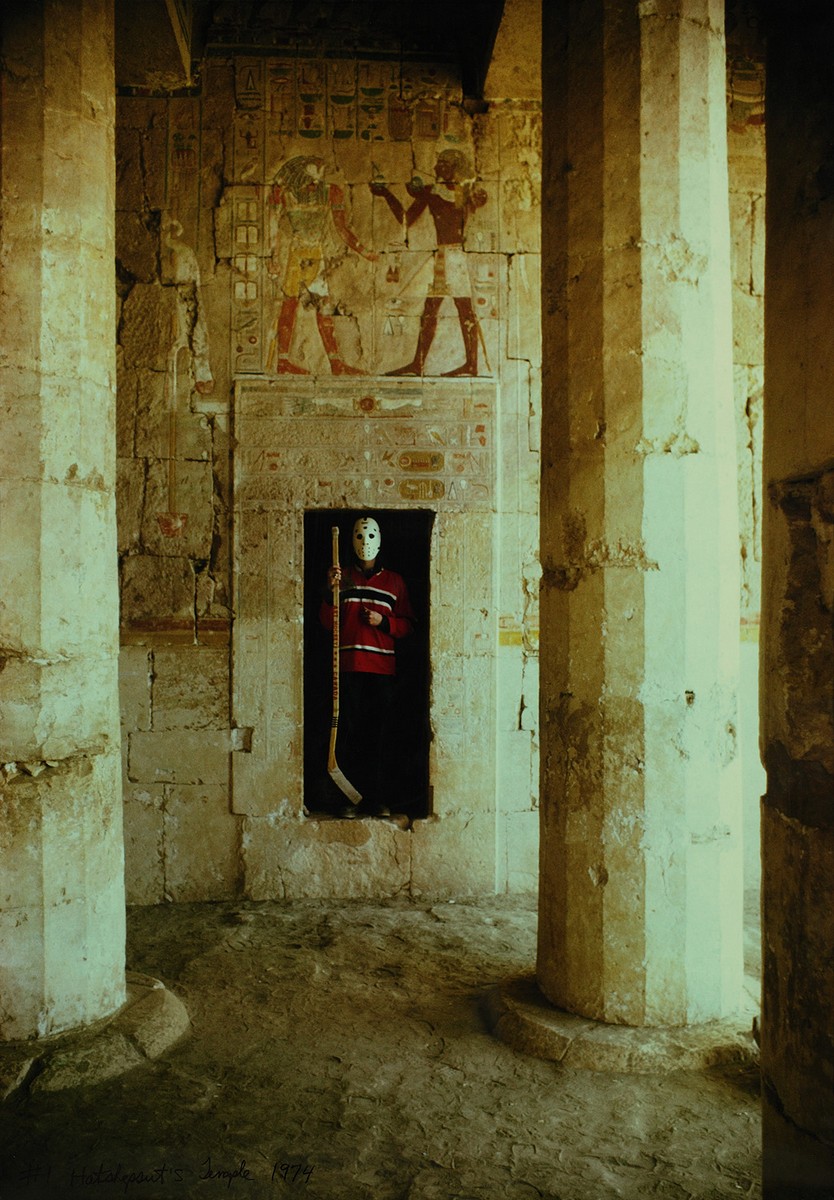
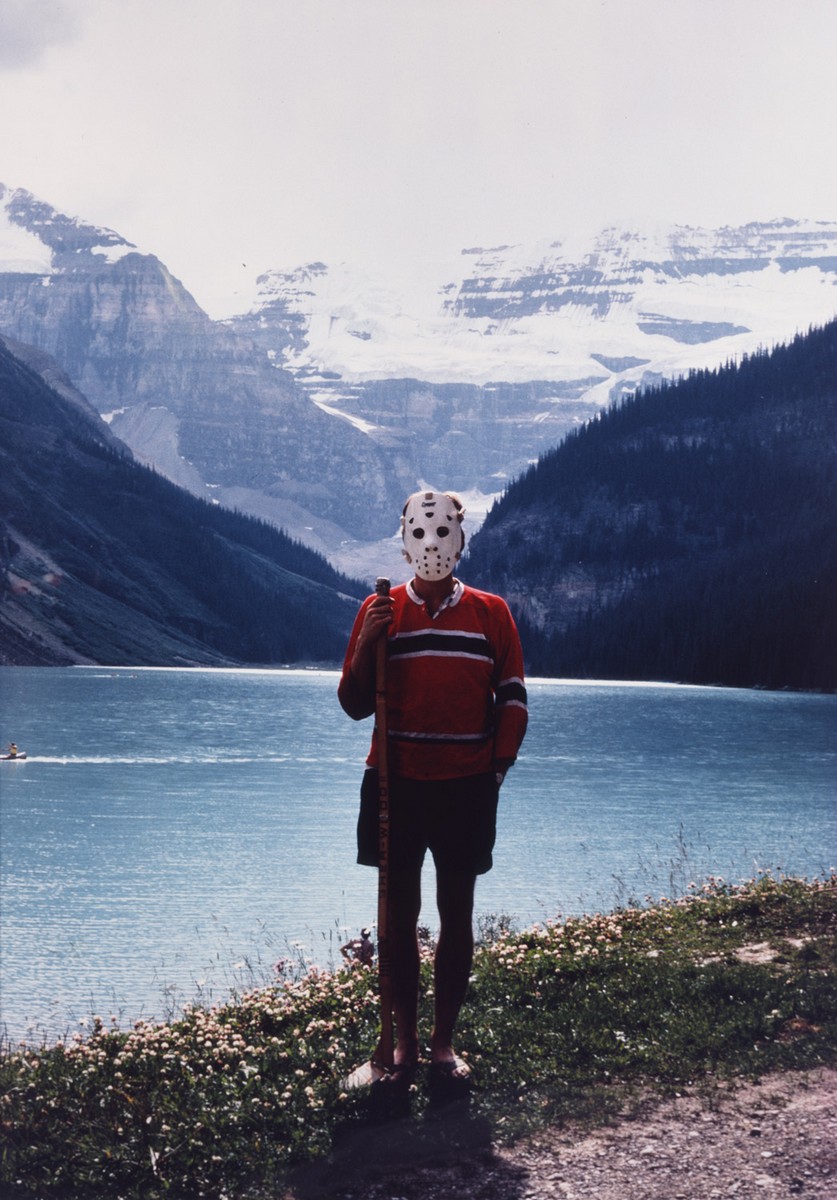
Cyndra MacDowall
Cyndra MacDowall is a Windsor-based artist whose work concentrates on spatial relationships vis-à-vis gender, memory, and history. In Circles & Stripes, MacDowall translates the physicality of hockey through a sensorial lens. While sitting in the penalty box watching the University of Windsor’s Lancer Women’s Hockey team play, MacDowall recorded the movement, speed and ephemerality of the gendered body on ice. Skating at high speeds across an expansive sheet of ice, the abstract and distorted bodies in the photographs thus offer new perceptions of gender in competitive sports.

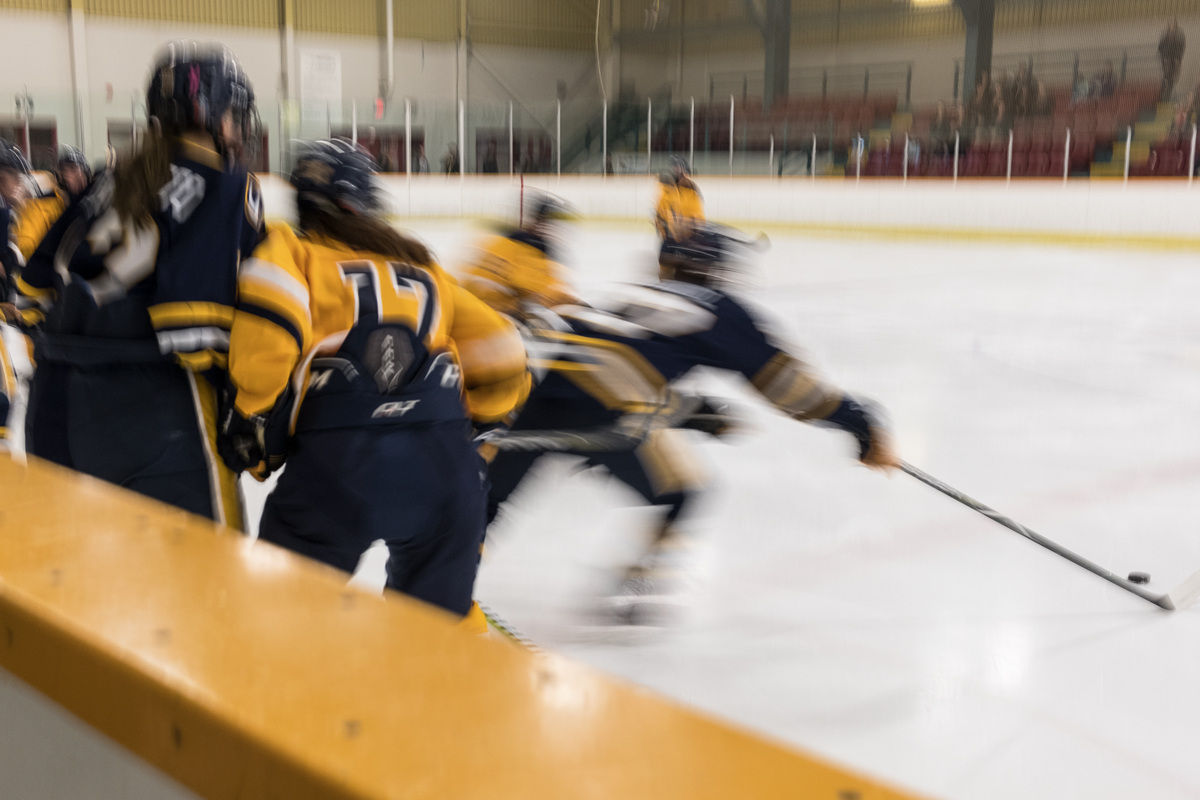

Hazel Meyer
Hazel Meyer is an interdisciplinary artist currently based in Vancouver, British Columbia. Container Technologies is the title of a 2000 text by theorist Zoë Sofia that argues for an understanding of the agency and complexity involved in the act of containing, holding, and storing objects as well as meanings. Meyer’s Container Technologies displays the hockey bags used to store the Canadian AIDS Memorial Quilt, a monumental community-made textile project comprised of more than 600, three by six feet panels that originated in 1989. Each quilt section represents a Canadian who has died from AIDS-related illness(es) since the 1980s. Currently stored at the Canadian AIDS Society (CAS) in Ottawa, sections of the quilt are folded and contained in 18 blue goalie bags that Molson Breweries donated to the project in the 1990s. In collaboration with CAS, Meyer is questioning the relevance and social impact of storing histories, lives, and the material culture of AIDS in Canada in goalie bags–bags that are heavy with symbolism, history, and devastation.
Hazel Meyer extends gratitude to Ryan Conrad and Cait McKinney.
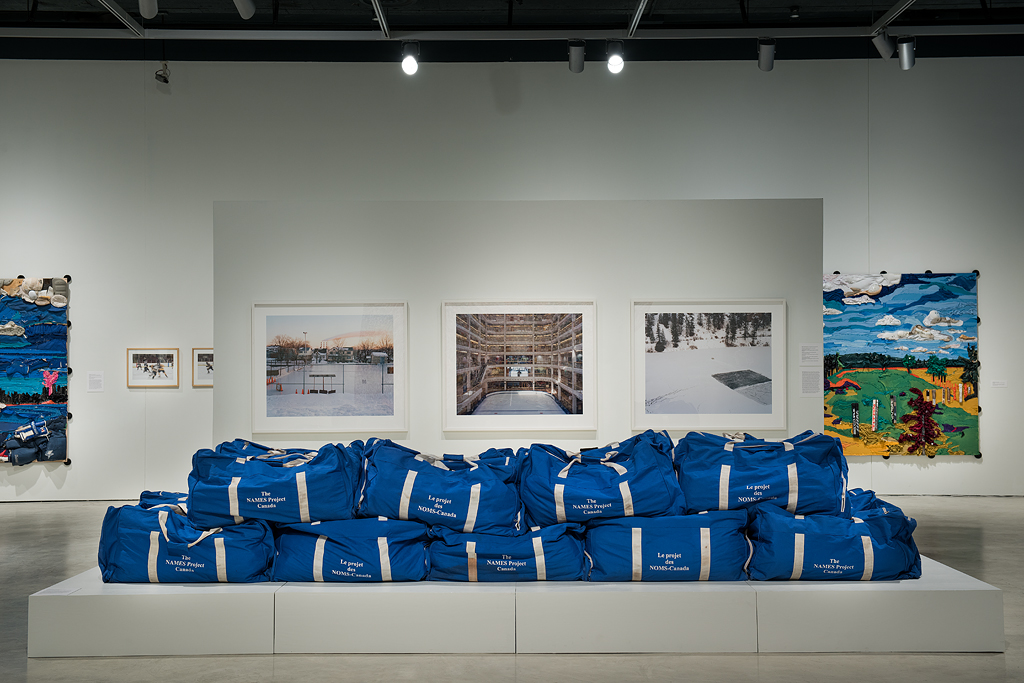
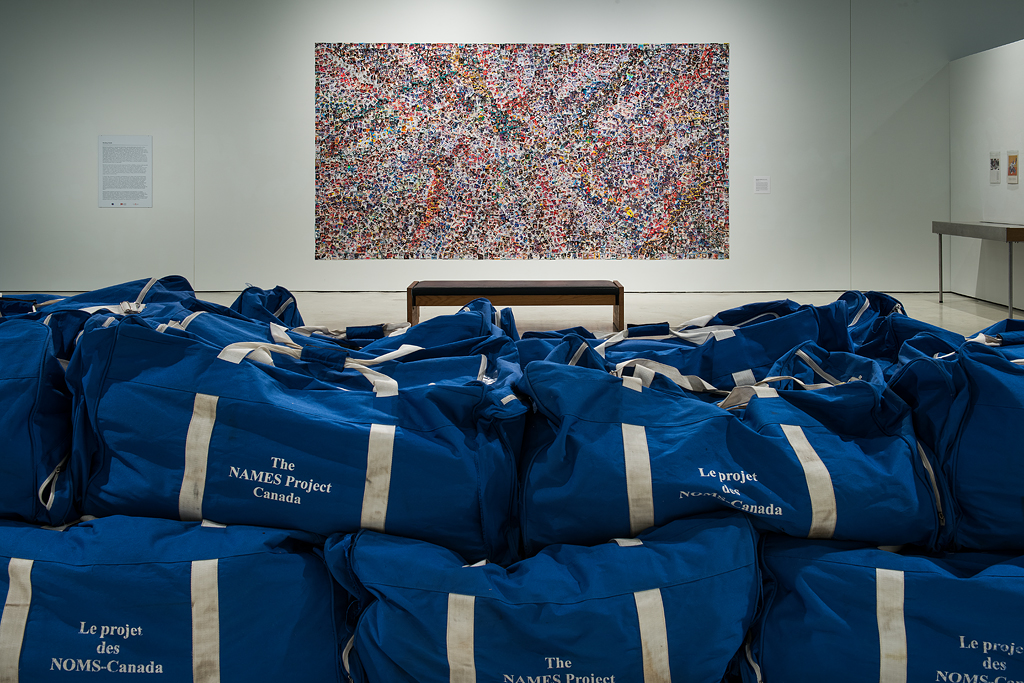
Laura Millard
Laura Millard’s human-scaled fabric lightbox reveals the traces left behind by hockey skates on a frozen lake. According to the artist, “a frozen, snow-free lake provides a vast surface on which to skate. It can also be considered a large surface on which to draw”. In the role of choreographer, Millard instructed a skater’s movement, speed, and form on ice resulting in a collaborative drawing. Similar to the ways in which a pencil leaves traces on paper, the blades of hockey skates etch lines into the surface echoing the swirling and swerving motions of the body on ice. From these indexical traces, Millard fuses gesture, drawing, and photography to blur the lines between representing landscape and experiencing place. The overall performative drawing is transferred on fabric and stretched across a lightbox. Using a water-based printing process, recycled fabric, and LED's to back-light the image, the artist recalls the experience of skating on a frozen pond.
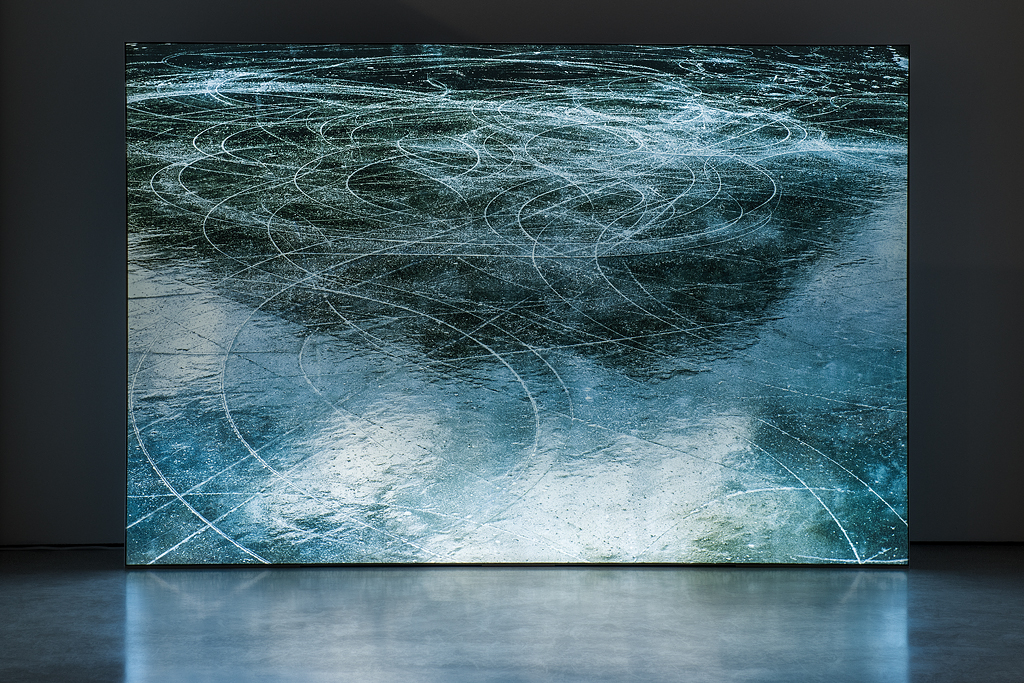
Kent Monkman
Kent Monkman is a Canadian artist of Cree ancestry who is well known for his provocative reinterpretations of romantic North American landscapes. Themes of colonization, sexuality, loss, and resilience – the complexities of historic and contemporary Indigenous experience - are explored in a variety of mediums, including painting, film/video, performance, and installation. His glamorous gender fluid alter-ego named Miss Chief Eagle Testickle appears in much of his work as a time travelling, shape shifting and supernatural being, who reverses the colonial gaze, upending received notions of history and Indigenous people.


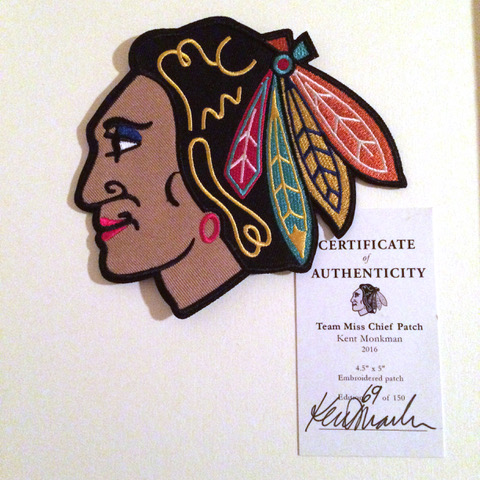
François Morelli
Rules and regulations are meant to establish level playing fields. In the game of hockey, infractions result in temporary banishment. When sentenced to the penalty box, also known as the “sin bin,” players become subject to public shaming and measured isolation from the game. In these moments, hockey players are reminded to play nice, be on their best behavior, exemplify sportsmanship, and control their temper. Although, according to Montreal-based artist François Morelli, the rules and regulations of hockey’s punitive system also serve an opposite function. Instead, he understands the penalty box as a space that encourages and glorifies violence on the ice. With what the artist names a “slap on the wrist side show,” sports entertainment has started to capitalize on defaming, destroying, and humiliating adversaries in the game of hockey.
In response to the new culture of “taking a knee” in professional sports versus the omission of knees in Mauvaise conduite–two of a hockey player’s most valuable assets on the ice&ndashMorelli’sinstallation reconsiders the body’s vulnerability in a game dominated by speed, strength, and strategy. Laced overtop tinkered metal forms that appear to have been cut off at the knees, the artist’s skates are precariously positioned to lean and pathetically pivot in a manner that recalls one of the main skills needed in hockey–to skate in circles.
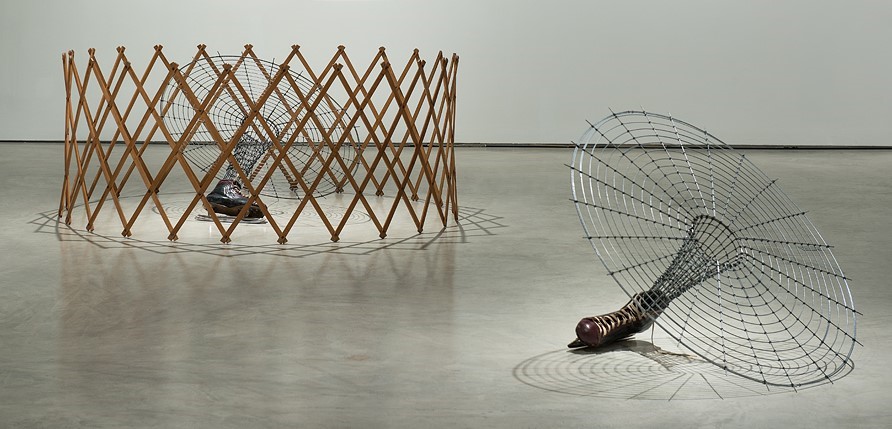
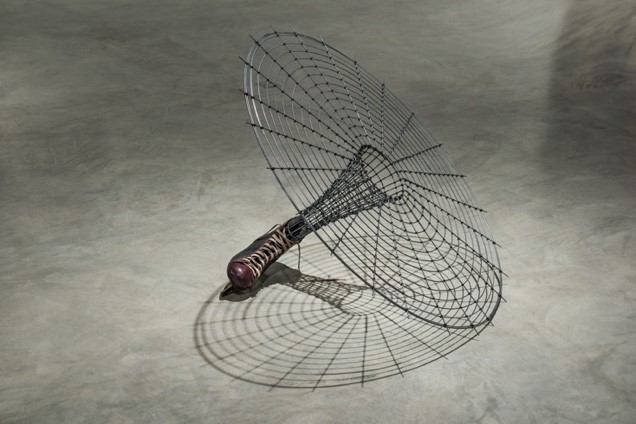
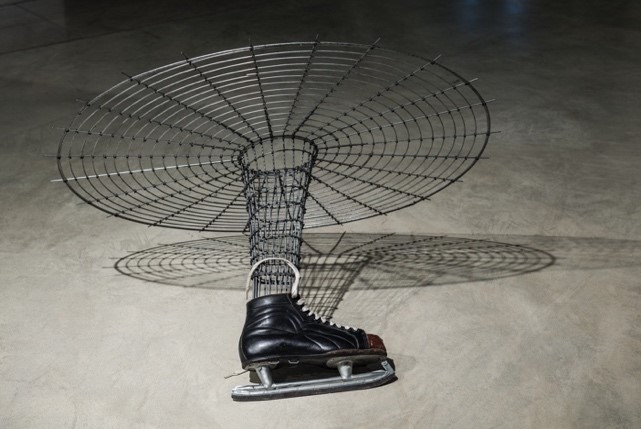
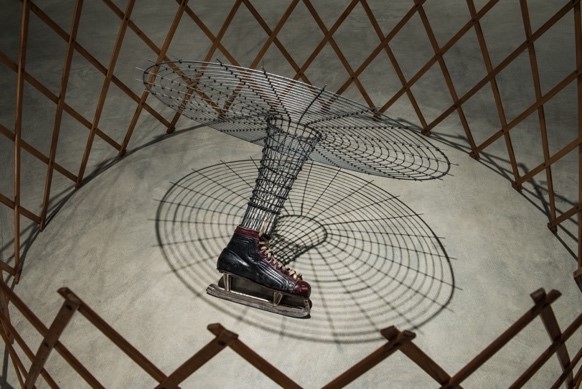
Didier Morelli
On November 11, 2011, as a preamble to a presentation on the African American artist William Pope.L for a seminar at the Center for Theatre, Drama & Performance Studies, Didier Morelli crawled two kilometers from his apartment to a classroom at the University of Toronto. Reciting an excerpt from the Le chandail de hockey (1979), a short story written by Roch Carrier excerpted on the five-dollar bill, he generated a kinesthetic urban experience to introduce Pope.L to his peers. In addition to wearing a Quebec Nordiques jersey, he carried a photocopied image of the artist bandaged around his head, an image he ate midway through the performance as a form of sustenance. In the context of this performance, Carrier’s story becomes an allegory for the historical tensions between English and French Canada. By embodying the vulnerability of Pope.L’s crawls, Morelli was able to reposition his identity as a bilingual artist within complex debates about national identity and citizenship in Canadian performance art.
Liz Pead
Liz Pead is a hockey player and artist currently living and working in Toronto. On the ice, Pead is a goaltender, and in the studio, she is a textile artist who blurs the lines between painting and installation. For years, she has been recycling her own used hockey equipment, materials she uses to construct colorfully assembled landscapes that look quintessentially Canadian, but yet impossible to locate on a map. Instead, her landscapes are non-places that hint at the invisibility and erasure of human life. Undeniable in their references to the landscape paintings produced by Tom Thomson and the Group of Seven at the turn of the twentieth century, Pead’s works are more than aesthetic scenes. By challenging the aesthetics of nationalism and performing hyper-feminist complications of the “artist as genius” myth, her works challenge the narratives of omission within Canadian art history.
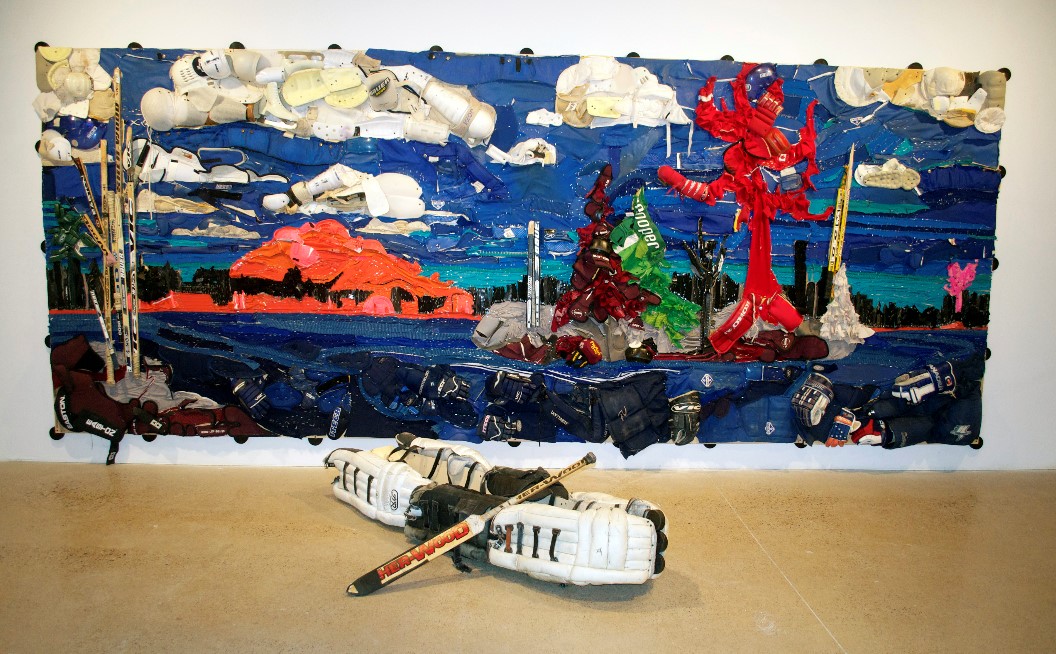

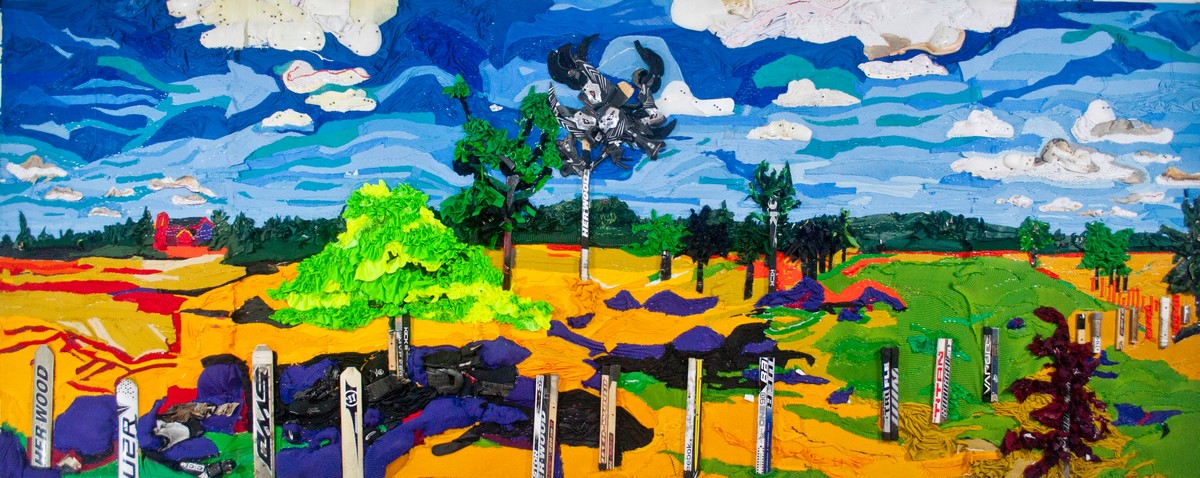
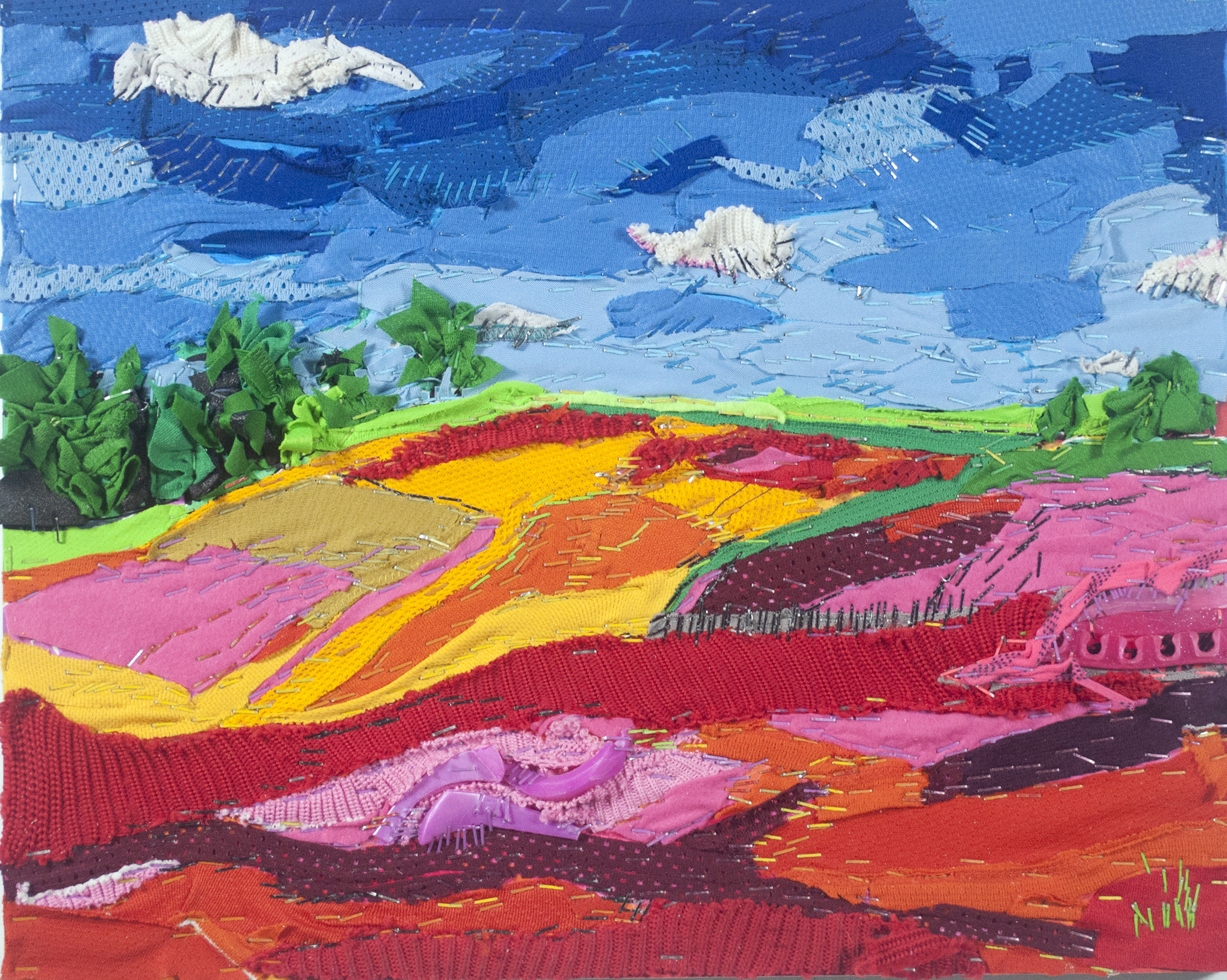


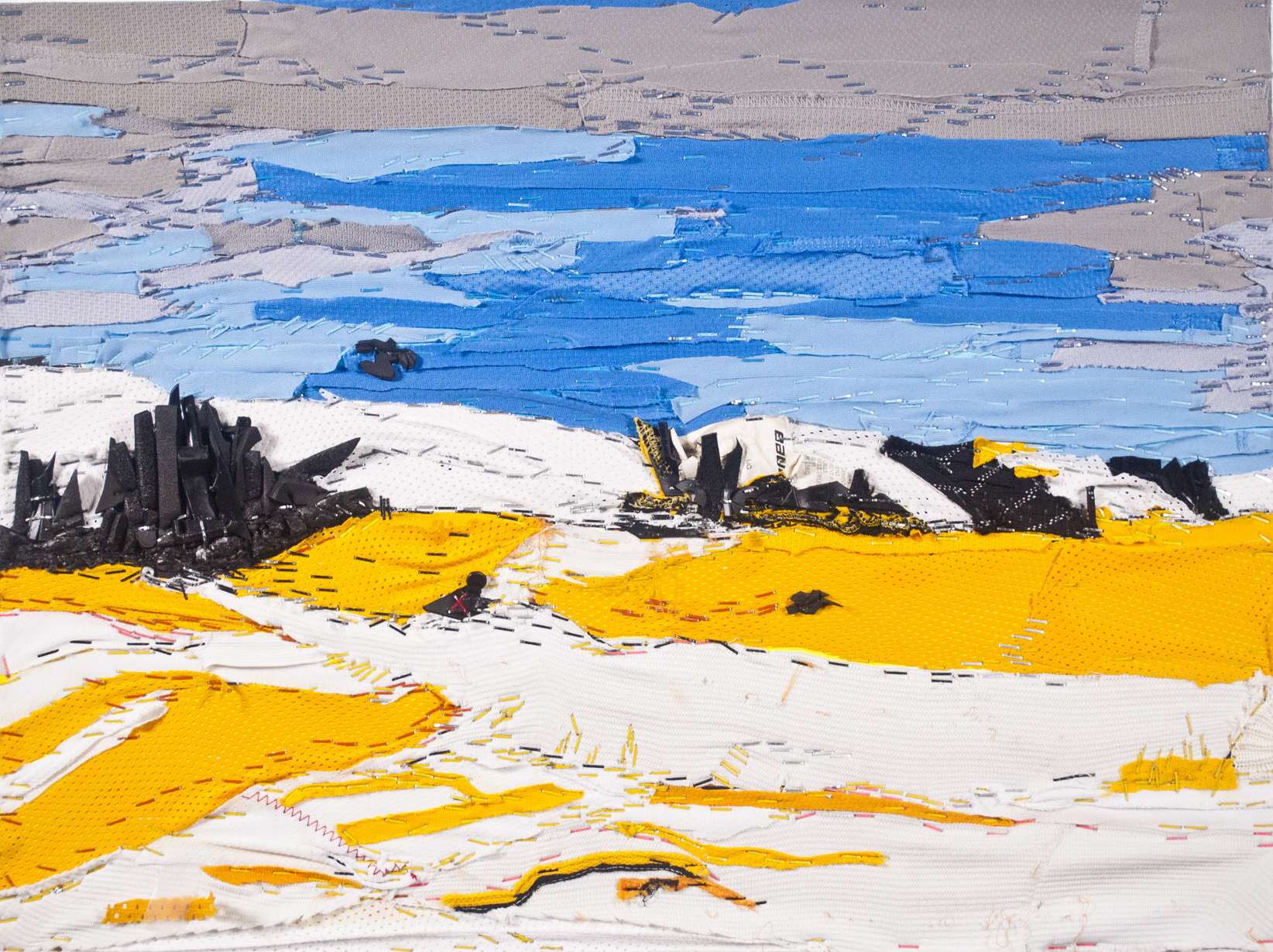
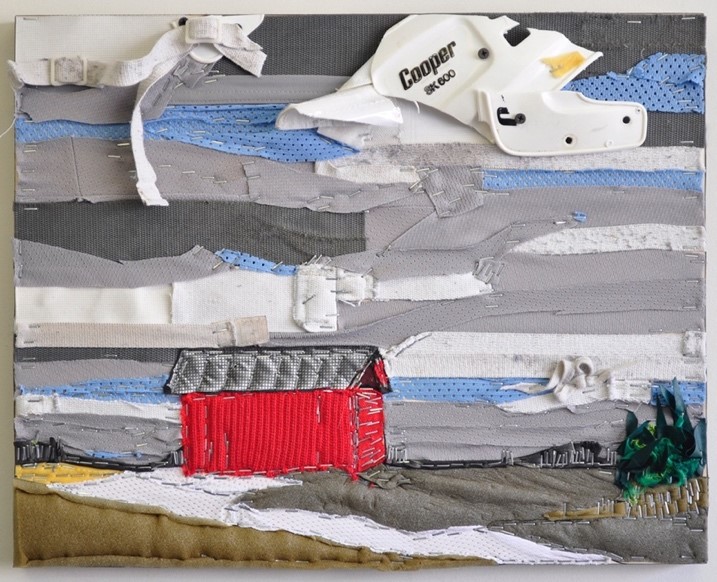
Liss Platt
Liss Platt’s ongoing series of paintings, digital prints, and videos entitled Puck Painting are rooted in the traditions of process art and gestural abstraction. Platt is a long-time hockey player and artist who combines the speed, power, and gendered histories of hockey in her painting and performance art practices. For many years, she has remained dedicated to borrowing, referencing and re-working the traditions of 1940s and 1950s abstract expressionism, an American movement in which artists such as Jackson Pollock, Mark Rothko, and Willem de Kooning emphasized gestural, spontaneous, and intuitive forms of mark making in their interpretations of modern painting. Created by shooting painted hockey pucks directly towards a white, goal-size (4’ x 6’) surface, the composition and patterning of each work is based on the speed, density, and angle of each slap shot. In Power Play, Platt’s puck paintings comment directly on the patterns and trends inherent within abstract expressionism. In relation to the sport, they document the ways in which a body playing defence in hockey must remain in constant motion on the ice. From a political perspective, they are also feminist statements that comment on the gendered histories of modern abstraction, a movement in which women artists were often overlooked.

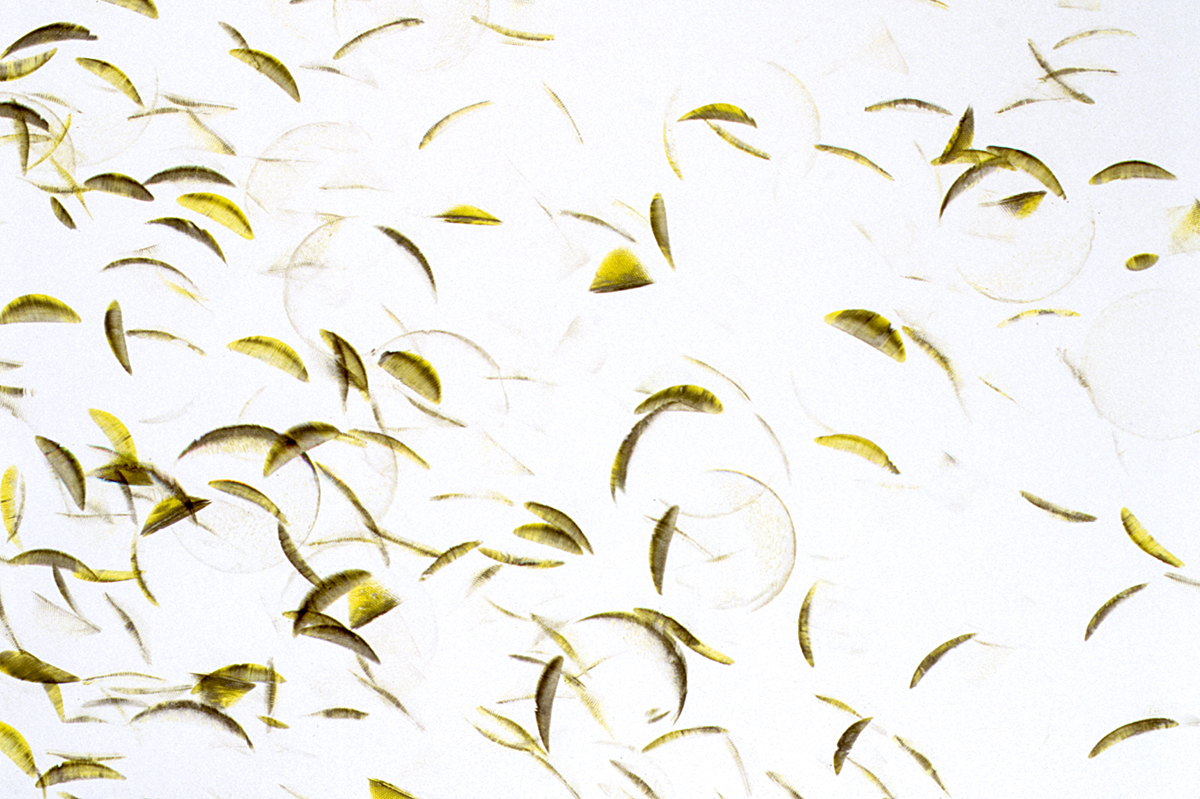

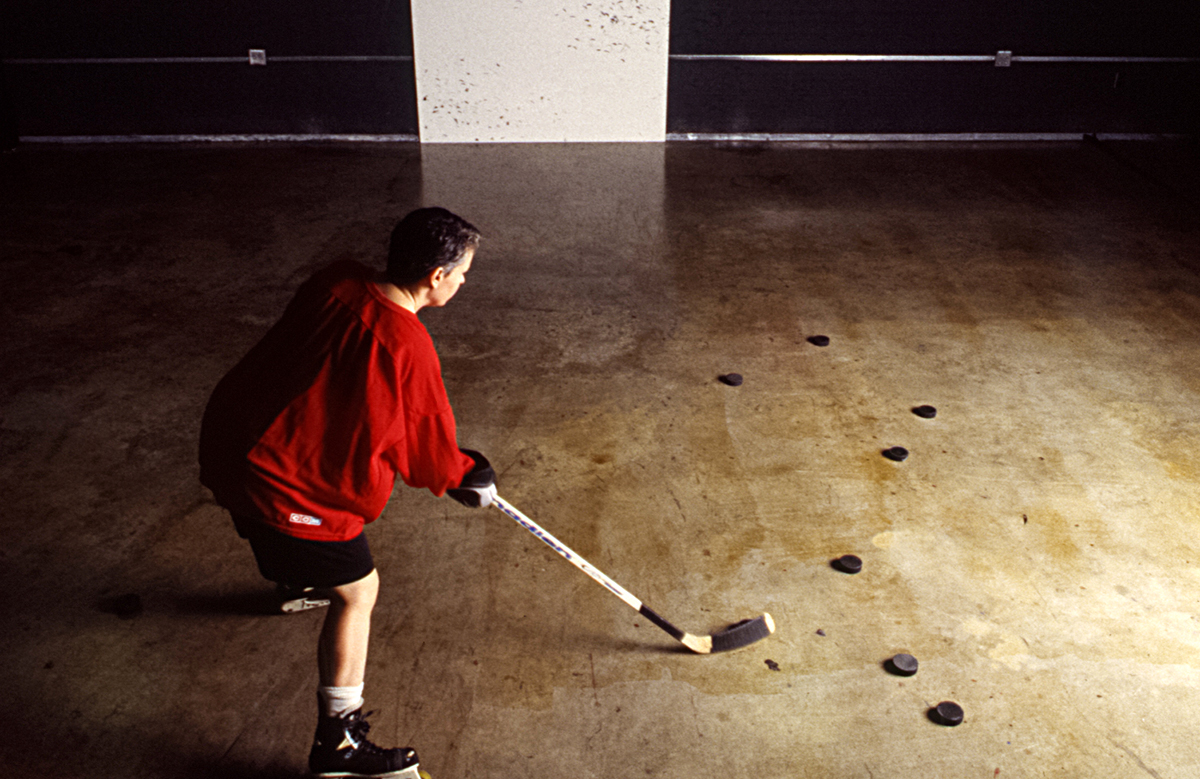
Victor Romão
Victor Romão is a multi-disciplinary artist living and working in Windsor, Ontario. His time spent living in rural Southwestern Ontario have inspired him to question Otherness and masculinity in rural sports culture. In Power Play: Hockey in Contemporary Art, Romão showcases the anti-heroes of hockey card culture. Unlike the remarkable athletes typically portrayed and celebrated on hockey cards, the men in these twelve paintings signal the everyman in the sport as well as in sports capitalism.
